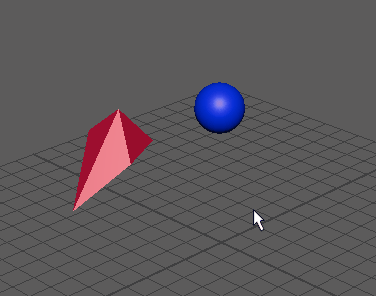Aim constraints let you constrain the orientation of an object so that the object points to other objects. Typical uses of the aim constraint include aiming a light or camera at an object or group of objects. For more information about the aim constraint, see Aim constraints.
When creating aim constraints, you can first set creation options and then create an aim constraint, or you can immediately create a constraint with the current creation options.
The default constraint options work well for constraining objects so that they aim along their local rotation positive X-axis.
To create an aim constraint
- Select one or more target objects, followed by the object you want to constrain to them.
- Select Constrain > Aim in the Rigging or Animation menu set.

To add an aim constraint to an animation layer
- Select one or more target objects, followed by the object you want to constrain to them.
- Select
Constrain > Aim >
 .
.
- In the
Aim Constraint Options window, set the constraint options you want.
From the
Animation Layer drop-down menu, select the animation layer where you want to add the constraint.
Tip:
Turn on Maintain Offset when adding constraints to animation layers so that your constrained objects do not move unexpectedly.
The constraint animation is now contained in its assigned animation layer, and it contributes to the result animation in your scene.